2017 Subaru Outback 2.5i Review

If there was a list of the most underrated family haulers on the market, the Subaru Outback would probably rank somewhere near the top.
It has quietly carried families and all their stuff around for 20 years, offering versatility that’s only matched by its practicality. But with so many crossovers to choose from these days, Subaru’s sport utility wagon is facing some stiff competition.
The Power of Choice
The majority of Outback models come powered by the same 2.5-liter boxer engine that’s offered in Subaru’s Legacy sedan and Forester crossover. A larger six-cylinder can be fitted under the hood on select trims, an engine that makes more power but burns more fuel as a consequence, and isn’t exactly necessary.
With the smaller four-cylinder putting power down to all four wheels, the Outback is good for 175 horsepower and 174 lb-ft of torque, making it perfectly capable of handling the rigors of daily driving. Power isn’t abundant, but delivery is nice and smooth, while the engine’s impressive throttle response doesn’t leave a lust for more giddyup.
FAST FACTS
| Engine: | 2.5L boxer four-cylinder |
| Power: | 175 hp, 174 lb-ft |
| Transmission: | CVT; Six-speed manual (Canada only) |
| EPA Fuel Economy: | 25 mpg city, 32 mpg hwy (CVT) |
| CAN Fuel Economy: | 9.4 city, 7.4 hwy (CVT) |
| US Price: | Starts at $26,520 (destination included) |
| CAN Price: | Starts at $29,670 (destination included) |
Both engines come mated to a continuously variable transmission, but in Canada the smaller of the two is still available with a six-speed manual gearbox — and the Outback is better for it. Like pretty much every manual on offer in a Subaru this side of the WRX, the six-speed in the Outback is less than perfect. The clutch is long and a little vague, and the engagement point can be tricky to find, but the shifter is smooth and easy to use, and features pronounced gates that make it almost impossible to miss a gear.
Like the recently refreshed Forester, the Outback’s continuously variable automatic doesn’t suffer from much of the rubberiness typical of transmissions of this ilk, and feels a lot like a traditional geared automatic.
Regardless of transmission choice, the clatter of the boxer engine throughout the rev range can be enough to draw complaints — especially from those unfamiliar with the horizontally-opposed cylinders.
Roaming Roads
Out on the road, the Outback drives as smoothly as any midsize crossover. It glides over uneven pavement without much fuss, and body roll is almost non-existent at most speeds despite sitting 8.7 inches (221 millimeters) off the ground. It’s also more compliant than you might expect, with the stilted suspension not too stiff or soft, helping the Outback ride more like a car than a sport utility. The steering can feel a bit numb at times, but it’s surprisingly firm and communicative, and doesn’t feel floaty and disconnected like so many other electrically power-assisted systems.
ALSO SEE: 2017 Subaru Forester 2.5i Review
The only time the Outback’s poise was ever shaken was during winds that were gusting as high as 44 mph (70 km/h), which, in all fairness, would be enough to disrupt even the most sure-footed sport utilities. It was the only time the Outback’s steering felt less than firm, though even then it didn’t seem overly disengaged, needing only slightly more driver input to stay on its way.
Tackling Trails
For those looking to head off the beaten path, the Outback is more than happy to play along. Like its stablemates, and particularly the Crosstrek and Forester, the wagon is built to tackle more than just dirt parking lots, and does so quite capably. With independent suspension at all four corners, the Outback is able to articulate itself over most obstacles with relative ease, though its long wheelbase means the Outback’s breakover angle isn’t great. Likewise, its approach and departure angles are less than stellar, with long overhangs that run the risk of bumps and bruises out on the rough stuff.
Our tester didn’t have the advantage of Subaru’s X-mode, which is standard on CVT models and optimizes the engine and transmission, and all-wheel drive and traction control systems for off-road adventures, but the standard limited-slip center differential proved its worth, helping distribute torque front to rear in the event of wheel spin.
ALSO SEE: 2016 Subaru Crosstrek Manual Review
The Outback doesn’t look quite as trail-ready as its smaller sibling, the Impreza-based Crosstrek, but it’s got a little bit of body cladding to protect it out on the trail. It also features a pair of rugged looking roof rails that are rated to carry 150 lb (68 kg) of gear — and include integrated crossbars that tuck away until they’re needed — if you can’t find a way to stuff it all in the back. That wouldn’t normally be a problem though, with the Outback offering 35.5 cu-ft (1,005 liters) of storage space behind the rear seats, and a whopping 73.3 cu-ft (2,076 liters) with them folded, so it’s way ahead of the competition when it comes to lugging gear.
Usable Interior
Up front, the Outback has plenty of room to carry four grown adults. Even with the front seats positioned to comfortably accommodate two taller adults, the Outback offers plenty of room in the second row, with plenty of head- and legroom. The rear doors also open wide to make loading and unloading as painless as possible, while the Jeep Wrangler-like ride height reduces the need to bend at the back to strap a child into a child seat.
Back on the road, the Outback features a comfortable and clear view of its surroundings, with all the extra glass doing a great job of cutting down on blind spots. Our tester was also equipped with blind spot monitoring for an extra sense of security, while other safety features, including adaptive cruise control, forward and reverse automatic emergency braking, and lane-keep assist can also be added as part of Subaru’s EyeSight driver assistance suite.
ALSO SEE: 2017 Nissan Pathfinder Review
Even in lower-grade trims, the Outback comes pretty well equipped, and features a backup camera, cruise control, dual-zone climate control, and heated front seats. It’s also got a pretty decent stereo that puts out impressive sound despite only having six speakers. The infotainment system is Subaru’s Starlink interface running through a seven-inch touchscreen. It’s also one I’m not crazy about, and is laggy and convoluted and could really use Apple CarPlay and Android Auto compatibility.
Otherwise, the Outback’s seats are comfortable, even in cloth, everything is well laid out, and most of the materials feel pretty nice to the touch. It’s a spacious cabin that somehow still feels cozy, and is definitely one of the easiest to live with on the market.
The Verdict: 2017 Subaru Outback 2.5i
Even easier to live with is the Outback’s sticker price. Starting at $26,520 ($29,670 in Canada) including destination fees, the Subaru Outback packs a lot of value into a family-friendly package.
With all the competition in the midsize crossover segment these days, it’s easy to forget about the under-the-radar Outback. But with its easy-to-live with ways, incredible cargo volume, and adventurous personality, it’s still at the top of its game — and as underrated as ever.
LOVE IT
- Endless cargo space
- Car-like ride
LEAVE IT
- Starlink infotainment interface
- Engine clatter

Dan is AutoGuide.com's Road Test Editor, a long-suffering Buffalo Bills fan, and a car guy since childhood. He enjoys long walks on the beach and long drives just about anywhere the road, track or trail will take him. You'll see him driving around evaluating cars and in front of a camera talking about them. Dan is a member of the World Car of the Year jury.
More by Dan Ilika








































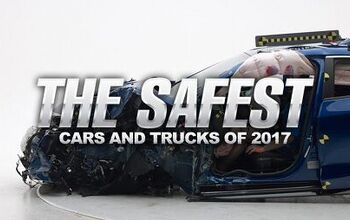
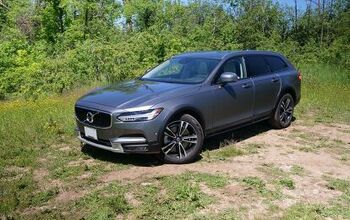
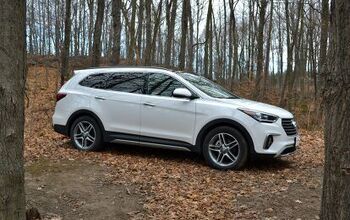
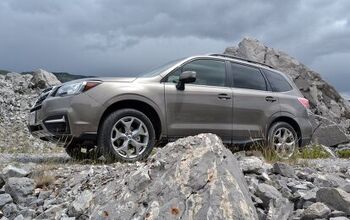
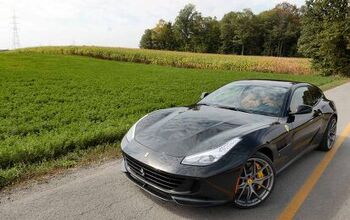

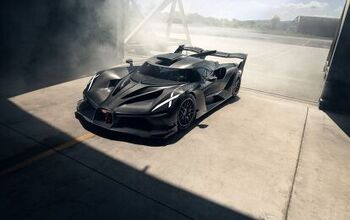
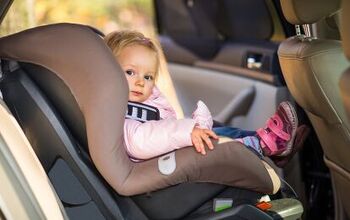

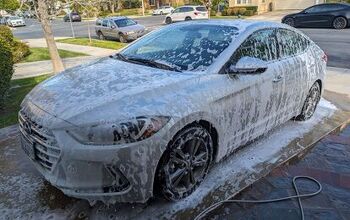


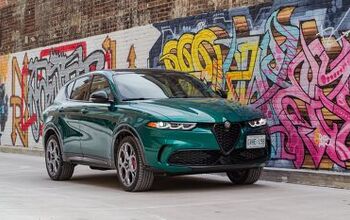

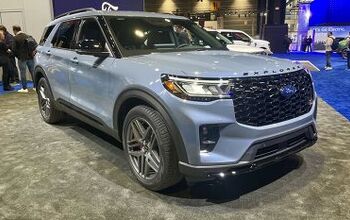
Comments
Join the conversation
I am on my 3rd Subaru and I love them. I don't think they are the greatest vehicles on the road, but I think they are the greatest vehicles on the road at their price points. I have owned an Outback, a Legacy, and just got a '17 Outback with eyesight. Could it have a little more juice? Sure. Could the infotainment center be a little better? Sure. But there is no way I could get this much vehicle for under $30k (I opted for the premium because while I like leather, I liked the price of the Premium with all the options). I would love for someone to show me a vehicle that could match up to the Outback at less than $30k pound for pound. I know I could have found a better vehicle, but I couldn't find a better value. Lastly, while I am sure I will find things I don't like about this vehicle, every single thing I hated about the 2010 Outback is not found on the 2017 (no temp gauge and rock hard armrests, for example). I am impressed Subaru seems to listen to complaints. Even if it takes a while since i know people have been complaining about the infotainment system for a couple of years now.
What the heck does Subaru have against the color RED, REAL RED?! Our first Outback '99 came in Rio Red I think it was called. Since then they push maroon and call it Venetian Red. It is NOT RED!!!! NOT EVEN CLOSE!!! They tell me red isn't a popular color?! Are they serious? It s the MOST popular color!!!! White, black and gray are NOT colors and they are the only "colors" more popular than RED!!! So when will we get the choice of fire engine red, candy apple red, or something close to those. Maroon is NOT RED!!! Listen up Subaru of America!!! Otherwise our next car will likely be a Soul Red Mazda CX-5!!!